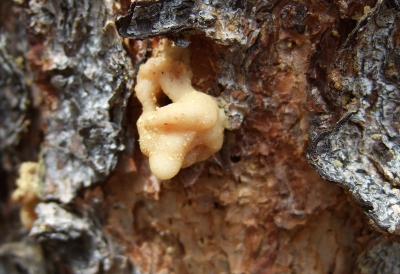Rocky Mountain Pine Beetle Control
Rocky Mountain Pine beetle control is a difficult task. Outbreaks of the Rocky Mountain pine beetle can develop anywhere, and cause the death of millions of trees. Mountain pine beetle (Dendroctonus ponderosae) is a native insect found in forested areas in western North America. These beetles affect primarily ponderosa, lodgepole, Scotch and limber pines. Occasionally they also attack bristlecone and pinyon pines.
Most often, trees which are under stress are most affected during an outbreak. Overcrowded tree stands, root diseases, poor soil conditions, lack of proper nutrients and injured tress are generally the first to be attacked. Although stressed trees are the most susceptible to pine beetle attacks, healthy trees are also affected during large outbreaks and in heavily infected areas. The best way to prevent trees from being infected in an area with an outbreak is tree spraying for rocky mountain pine beetle.
In Colorado, the pine beetle has a one year life cycle. Generally the beetles move in late summer. It is common for the beetles to coordinate “mass attacks.” Large numbers of female beetles move to trees, sometimes miles away, and tunnel under the bark. Once in the tree, beetles will mate and form an egg gallery under the bark. These galleries appear as vertical tunnels and each pair can produce about 75 eggs. Once the eggs hatch, the larvae move away from the egg gallery, creating more tunnels in the bark. The larvae live and move throughout the infected tree for the entire winter. They begin emerging as adults in late summer when they start the cycle over again. Mountain pine beetle control can be a daunting task.
While the beetles do cause damage themselves to the tree, the beetles also carry spores of a bluestain fungus. This fungus grows in the tree and along with the beetle, kills the tree.
Signs of Attack

Pine beetle pitch tube
There are several signs that you have infected trees on your property. If you notice any of the following signs, call your SprayTech expert immediately.
- Pitch tubes: Masses of resin that develop on the truck where the beetle first entered the tree. These are often described as “popcorn-shaped” and can be brown, pink or white in color.
- Dust: Look around the base of the tree and in crevices for boring dust.
- Woodpeckers: These birds feast on pine beetles, look for bark flakes and patches that have been removed, or the birds themselves.
- Dying trees: If the foliage on your pine has turned red or yellow, your tree has likely been attacked several months ago
- Mountain Pine Beetles: The most certain sign of an attack. Use a hatchet to remove bark from the tree and search for eggs, larvae, pupae and/or adult insects.
- Bluestain fungi: Look for bluish sapwood around the tree
Preventing & Controlling Rocky Mountain Pine Beetle
Oncee a tree has been infected with Rocky Mountain pine beetle; there is no way to save it. Having SprayTech remove the tree as soon as possible can help prevent nearby trees from being infected. Preventative spraying for mountain pine beetle is the best and most cost-efficient way to control pine beetle attacks on your property.
SprayTech’s qualified technicians can help you determine if your trees are at risk for pine beetle infestation. We are experts at controlling mountain pine beetle and offer comprehensive long and short-term plans for your property. From maintaining healthy trees, removing dead ones and preventative spraying, we can be your first defense from encroaching pine beetles. Contact SprayTech or request an estimate.

